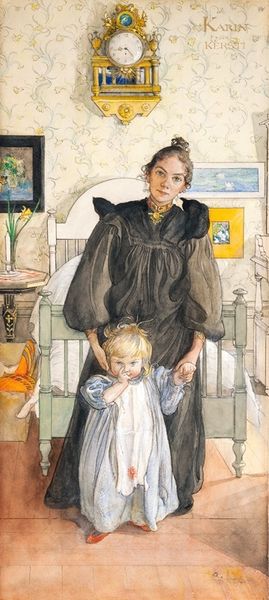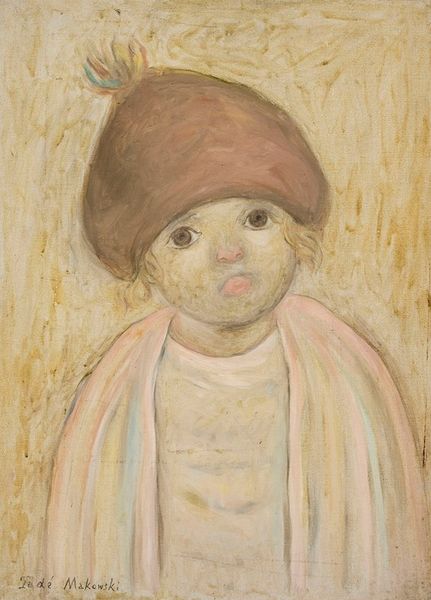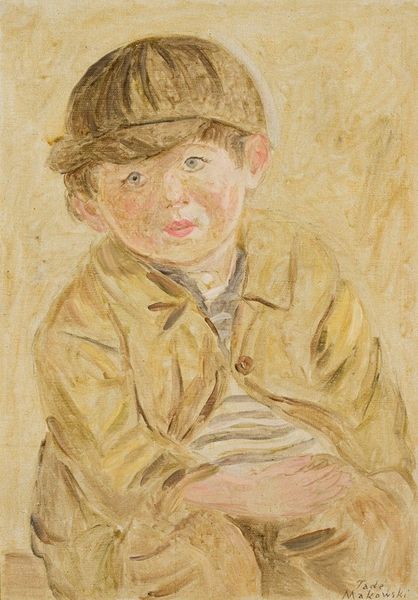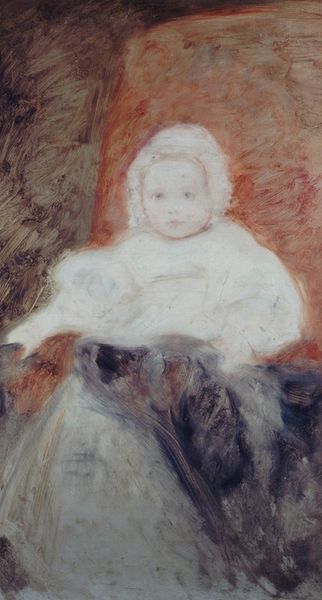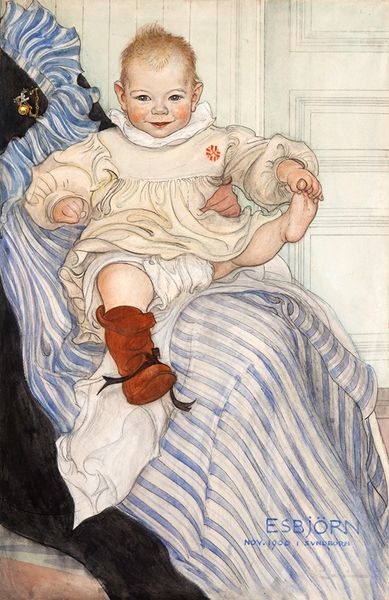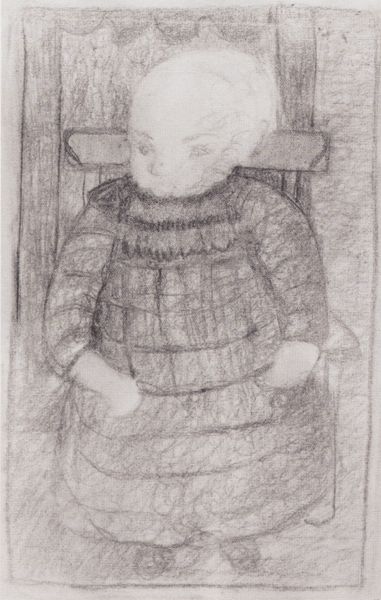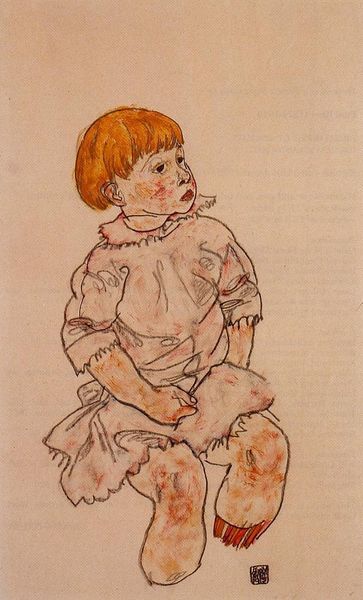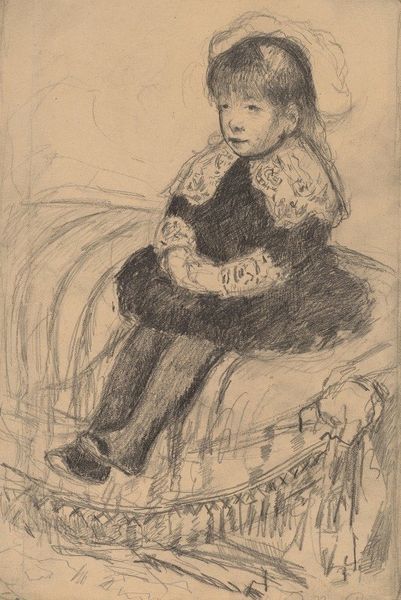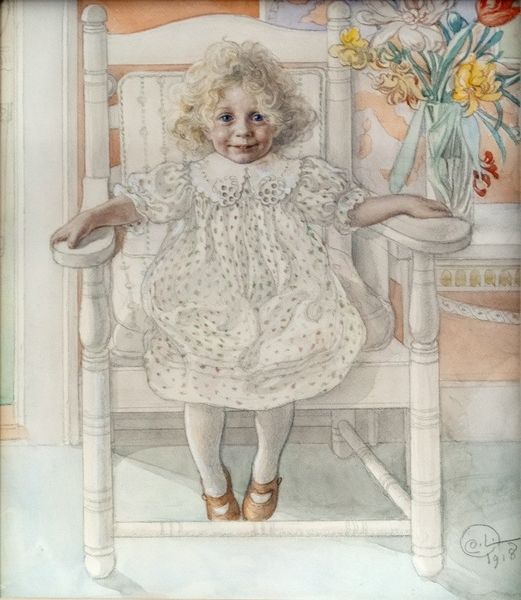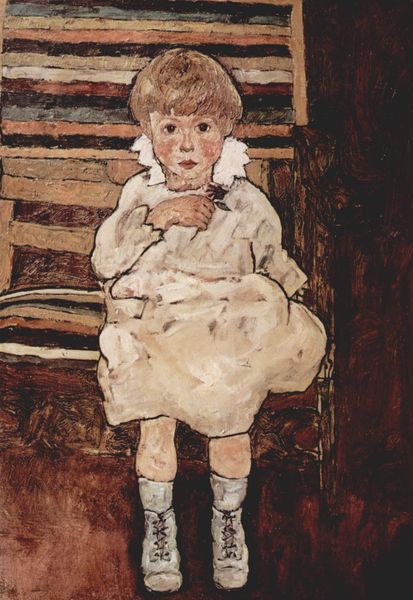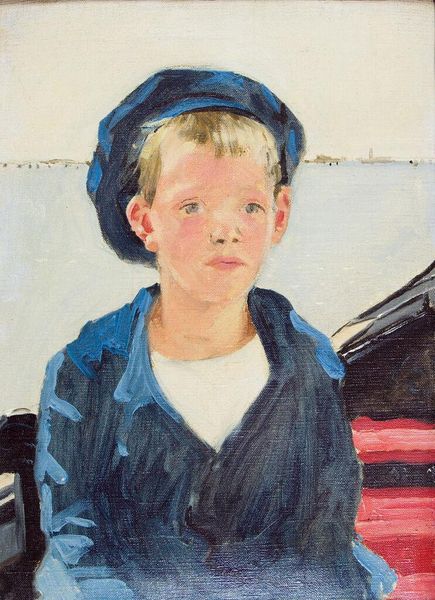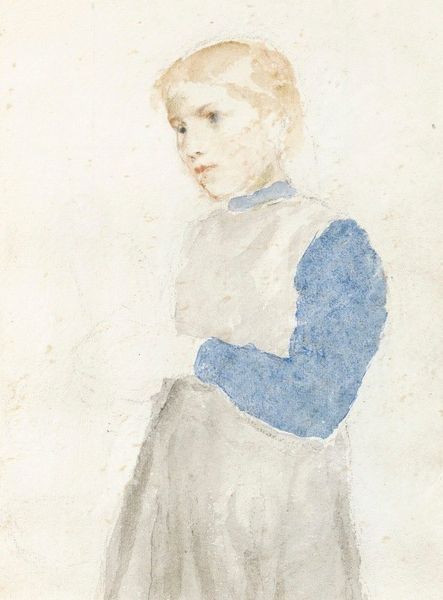
Copyright: Public Domain: Artvee
Curator: Carl Larsson's "Girl and Rocking Chair," created in 1907, is an intimate watercolor that seems to capture a fleeting moment in time. Editor: It feels hushed, almost ethereal. The muted palette and soft focus create a dreamlike quality. Curator: Larsson was a master of portraying domestic scenes, offering a glimpse into the lives of his family. His art is steeped in a romanticized version of Swedish life, presenting an idealized image of childhood and home. There's a strong emphasis on family roles and bourgeois values here. Editor: I'm struck by the composition. The stark geometry of the chair offers a beautiful counterpoint to the organic shapes of the Christmas tree, blurring the boundary between domesticity and the external world, while also contrasting with the soft curves of the little girl’s face and coat. The textures in the piece are intriguing; watercolor has the ability to show different material properties depending on the technique and level of dilution and directionality. Curator: Indeed, Larsson's paintings often acted as subtle affirmations of class and cultural identity. By showcasing his children in these cozy settings, he celebrated a particular lifestyle while possibly excluding other experiences. I am wondering about accessibility within idealized family portraits like this. Who gets to see themselves as represented in art, and who is made to feel invisible? Editor: An important question. I'm thinking too about Larsson's mastery of light, particularly the soft illumination that seems to emanate from the background. He manages to balance clarity of line with the subtle atmospheric washes in the background. Curator: It's a balancing act between creating a heartwarming family snapshot and promoting particular notions of belonging. His work is deeply intertwined with the sociopolitical environment of his time. Editor: I can appreciate that. But through careful attention to detail, proportion, and scale, the picture creates a harmonic view into a subjective reality and experience, no matter the historical or sociological factors at play. Curator: Ultimately, examining "Girl and Rocking Chair" allows us to delve into discussions surrounding the purpose and politics of art, identity, and the nuanced ways they converge in representations of family life. Editor: And for me, considering line, texture, light, composition opens doors to see just how an image conveys emotions, a vital way to look at visuality across time and context.
Comments
No comments
Be the first to comment and join the conversation on the ultimate creative platform.
